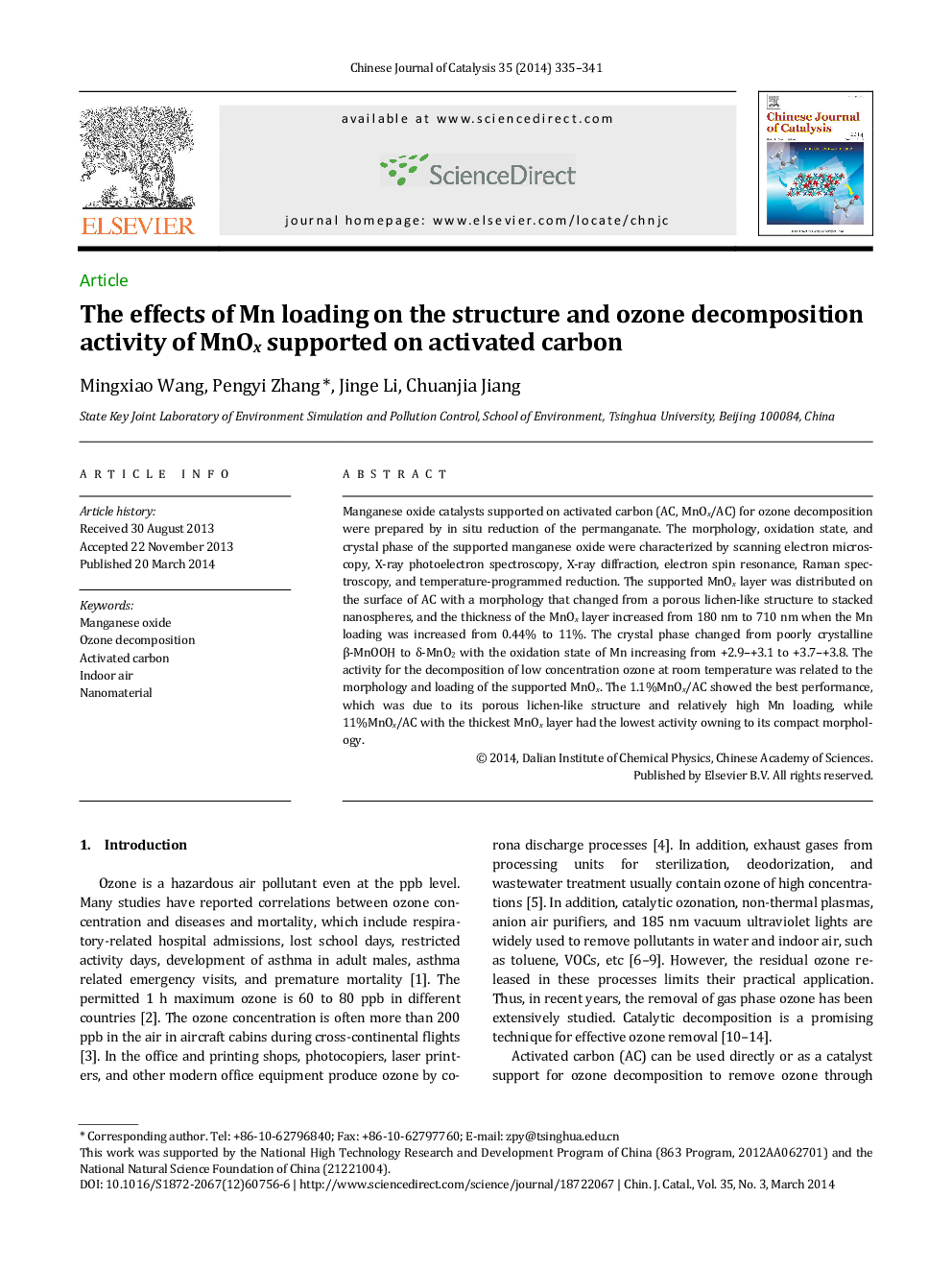| Article ID | Journal | Published Year | Pages | File Type |
|---|---|---|---|---|
| 59003 | Chinese Journal of Catalysis | 2014 | 7 Pages |
Manganese oxide catalysts supported on activated carbon (AC, MnOx/AC) for ozone decomposition were prepared by in situ reduction of the permanganate. The morphology, oxidation state, and crystal phase of the supported manganese oxide were characterized by scanning electron microscopy, X-ray photoelectron spectroscopy, X-ray diffraction, electron spin resonance, Raman spectroscopy, and temperature-programmed reduction. The supported MnOx layer was distributed on the surface of AC with a morphology that changed from a porous lichen-like structure to stacked nanospheres, and the thickness of the MnOx layer increased from 180 nm to 710 nm when the Mn loading was increased from 0.44% to 11%. The crystal phase changed from poorly crystalline β-MnOOH to δ-MnO2 with the oxidation state of Mn increasing from +2.9–+3.1 to +3.7–+3.8. The activity for the decomposition of low concentration ozone at room temperature was related to the morphology and loading of the supported MnOx. The 1.1%MnOx/AC showed the best performance, which was due to its porous lichen-like structure and relatively high Mn loading, while 11%MnOx/AC with the thickest MnOx layer had the lowest activity owning to its compact morphology.
Graphical AbstractThe 1.1% MnOx/AC (AC: activated carbon) catalyst gave the highest activity for ozone decomposition, which was mainly due to its porous structure, while 11% MnOx/AC with the thickest MnOx layer showed the lowest activity because of its compact morphologyFigure optionsDownload full-size imageDownload as PowerPoint slide
